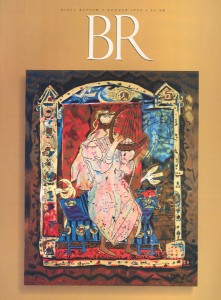Signs Gospels
Two Accounts of the Wedding at Cana
Sidebar to: The Gospels that Didn’t Make the Cut
Two Accounts of the Wedding at Cana
The Signs Gospel is a hypothetical text believed by many scholars to predate the canonical gospels and is thought to be embedded in the Gospel of John. It records Jesus’ deeds, almost all of them miracles, and contains very little of the speeches found in those parts of John that are not drawn from the Signs Gospel.
The passages below contain a scholarly re-creation of the wedding at Cana as it might have been described in the Signs Gospel, and the same scene as found in John. There are subtle differences. Note that the Signs Gospel does not say of the six stone water-jars—as does John—that they were “for use in the Jewish rite of purification.” Its Christian-Jewish audience, unlike John’s, would not need to be told that. Also, in the last sentence, the Signs Gospel describes the events at Cana as the first of Jesus’ signs and understands that sign as the beginning of Jesus’ public ministry. In John, Jesus’ wondrous deeds are better termed “miracles.” At times they merely astound (as in John 4:48) or may even have no effect (John 2:18; 6:26). In the Signs Gospel, they show who Jesus was.
Now on a Tuesday there was a wedding at Cana [in Galilee]. Jesus’ mother was there. Jesus was also invited to the wedding, along with his disciples. When the wine had run out, Jesus’ mother says to the servants, “Whatever he tells you, do it.”
Six stone water-jars were standing there, and each could hold twenty or thirty gallons.
“Fill the jars with water,” Jesus tells them. “Now dip some out and take it to the caterer.” And they did so.
Already a library member? Log in here.
Institution user? Log in with your IP address.

